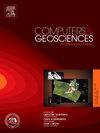基于STEMMUS-SCOPE模型的开放土壤-植物数字孪生模型的研究
IF 4.4
2区 地球科学
Q1 COMPUTER SCIENCE, INTERDISCIPLINARY APPLICATIONS
引用次数: 0
摘要
干旱和热浪危及陆地生态系统服务。开发一个开放的数字孪生土壤-植物系统可以帮助监测和预测这些极端事件对生态系统功能的影响。我们说明了我们最近开发的STEMMUS-SCOPE模型- stemmus,非饱和土壤中能量,质量和动量的同时传递;SCOPE,光合作用和能量通量的土壤冠层观测-将土壤-植物过程与新的卫星观测(例如太阳诱导的叶绿素荧光)联系起来,有助于实现这样的数字孪生。这种土壤-植物数字孪生体为利用遥感观测跟踪地上和地下的生态生理过程提供了一个机制窗口。遵循开放科学和公平(可查找,可访问,可互操作,可重用)原则,数据和研究软件,我们提出了土壤-植物数字双胞胎的构建模块。它强调了促进公平的数字技术将研究需求和发展转化为可复制和可重复使用的数据、软件和知识的重要性。本文章由计算机程序翻译,如有差异,请以英文原文为准。
Towards an open soil-plant digital twin based on STEMMUS-SCOPE model following open science
Droughts and heatwaves jeopardize terrestrial ecosystem services. The development of an open digital twin of the soil-plant system can help monitor and predict the impact of these extreme events on ecosystem functioning. We illustrate how our recently developed STEMMUS-SCOPE model—STEMMUS, Simultaneous Transfer of Energy, Mass and Momentum in Unsaturated Soil; SCOPE, Soil Canopy Observation of Photosynthesis and Energy fluxes—links soil-plant processes to novel satellite observables (e.g. solar-induced chlorophyll fluorescence), contributing to such a digital twin. This soil-plant digital twin allows a mechanistic window for tracking above- and below-ground ecophysiological processes with remote sensing observations. Following Open Science and FAIR (Findable, Accessible, Interoperable, Reusable) principles, both for data and research software, we present the building blocks of the soil-plant digital twin. It emphasizes the importance of FAIR-enabling digital technologies to translate research needs and developments into reproducible and reusable data, software and knowledge.
求助全文
通过发布文献求助,成功后即可免费获取论文全文。
去求助
来源期刊

Computers & Geosciences
地学-地球科学综合
CiteScore
9.30
自引率
6.80%
发文量
164
审稿时长
3.4 months
期刊介绍:
Computers & Geosciences publishes high impact, original research at the interface between Computer Sciences and Geosciences. Publications should apply modern computer science paradigms, whether computational or informatics-based, to address problems in the geosciences.
 求助内容:
求助内容: 应助结果提醒方式:
应助结果提醒方式:


